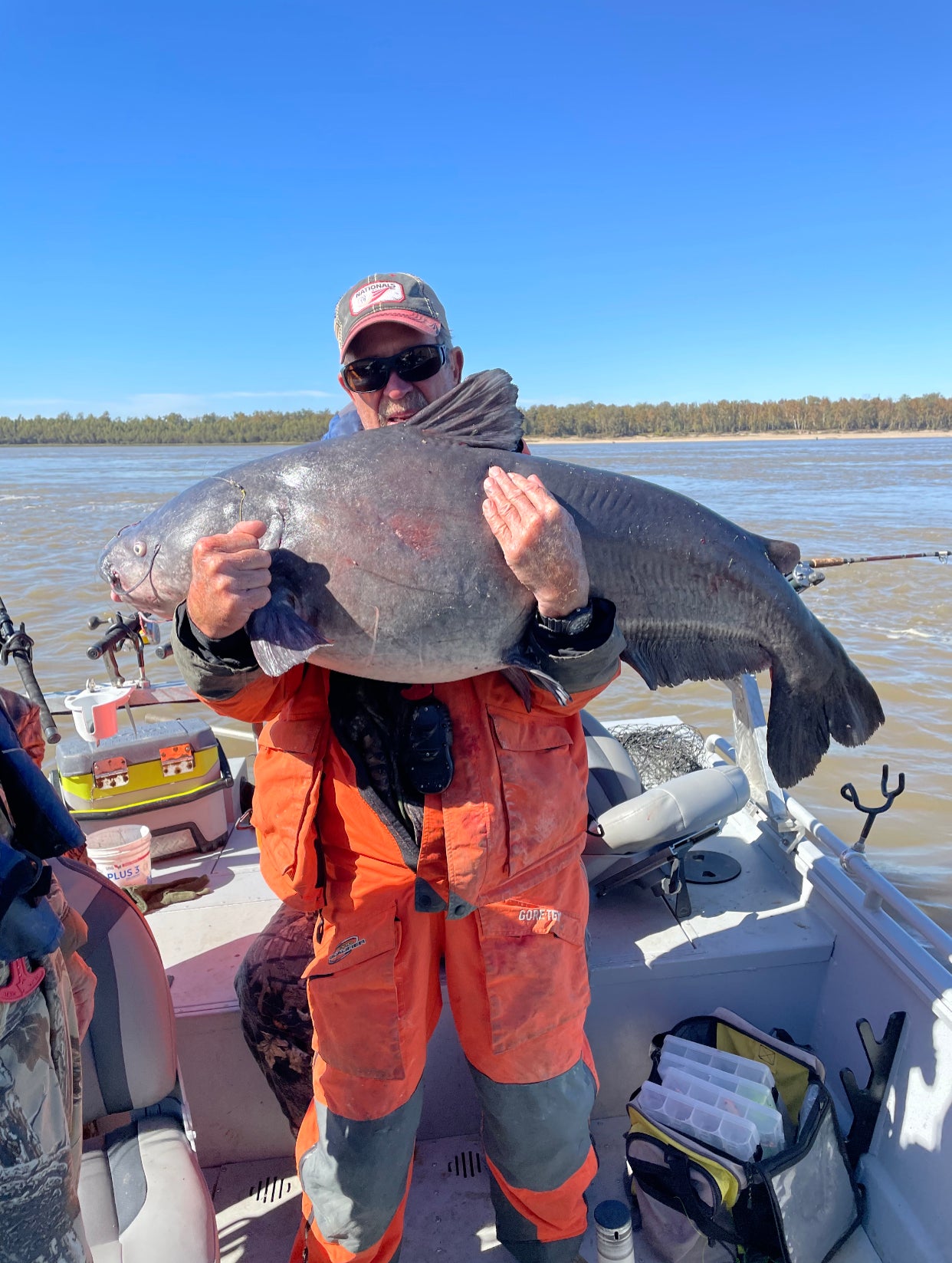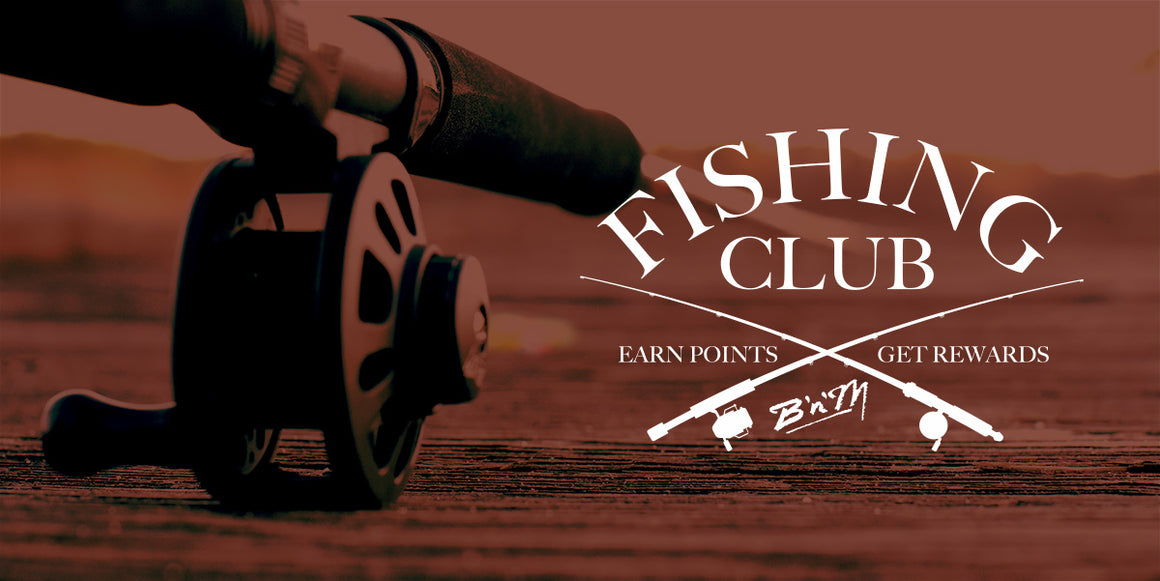
Bob Crosby Conquers Low Water Catfish
Bob Crosby Conquers Low Water Catfish
By Phillip Gentry
The Mississippi River is known far and wide as one of the most prolific cat fisheries in the country. Anglers ply it’s rolling, muddy waters for both channel catfish and flathead catfish but the king of the Mississippi is the Arkansas Blue Catfish.
B’n’M pro-staffer Bob Crosby, from Madison, Mississippi, has been fishing the Mississippi River for most of his life and has learned how to catch trophy blue catfish under almost every situation and condition. Crosby states that low water might be one of the most challenging conditions to face.
Recently, due to widespread drought conditions, the Mississippi dropped to record low levels and was at an historic low in Vicksburg, Mississippi where Crosby operates his Blue Cat Guide Service.

The biggest barrier to low water catfishing is getting access to the river.
“I can launch at Vicksburg when the gauge reads just .6 but this year, we had levels that were - 1 and even – 1 ½ feet and that’s too low to launch,” he said. “That’s so low the concrete ramps are out of the water.”
Fortunately, the low water condition only lasted a couple of weeks and the river rose enough for Crosby to resume business and get back on the river. It sparked some interest on his behalf to talk about what low water means for catfish anglers and how to overcome adverse conditions.
“Access is the number one problem,” he said. “I run a 2100 G3 catfish boat and there was no way I could get in the water.”
He suggested that enterprising anglers can find some shore launching facilities where there is no concrete and just put in off the bank, assuming the ground is firm enough.

Skipjack herring is a hands down favorite for catfishing in the Mississippi River.
Once in the water, he said that the fishing doesn’t change as much as many anglers might believe. According to Crosby, the same types of situations that you look for to hold catfish generally still do but are not where you’d expect them.
“This time of year, we normally fish the ends of the wing dikes,” he said. “The tops of these were all out of the water but the catfish didn’t seem to want anything to do with them.”
One of his favorite tactics during the early fall is bottom-bouncing or bumping for catfish. He said even in low water, there is plenty of current to bump and the softening currents actually make it easier to fish, allowing anglers to get by with 4 oz bumping weights instead of heavier 8 – 10 – 12-ounce ones. The edges of exposed revetment banks are also great places to bottom bounce as fish will lay along the edge of the structure.
“Bumping is good down to around the upper 50’s,” said Crosby. “By the time I could get back on the water after some rain in the northern states, our temperatures here had cooled off to 59 degrees and that cooler temperature slows the fish down to where they won’t come and get a bait like you’d expect.”
Instead of anchored fishing on wing dikes and dams, Crosby said look for sharp points that stuck out into the river. These points will form deep holes that the big blue catfish will drop back to when the water recedes. Another often overlooked area to find low water catfish is on the south end of a large sandbar. The shifting currents will scour out deeper cuts and naturally, catfish are drawn there.

Spending some time on the sonar unit to find “new” deep holes is worth the effort when the water is down.
“These are not obvious spots like the wing dams,” he said. “You have to spend a lot of time on the sonar unit looking for holes and deeper water. You also need to keep an eye out for treetops and rock piles that will hold fish in the deeper water.”
Anchored fishing these areas is different today than it used to be. Rather than hauling out lots of rope and anchors to lock the boat in position, Crosby uses a large electric trolling motor with a “Spot Lock” feature that will hold the boat in one position based on GPS readings and the softer current works in favor of the new technology.
“Once I’ve picked a spot, I’ll put out 8 Carolina-rigged rods all around the boat,” he said. “I’m still using skipjack herring, which is the preferred bait of most catfish anglers, but on occasion I’ll mix in some cut gizzard shad, which sometimes works better than skipjack when the water cools off.”
Crosby said the slowing metabolism of catfish as winter approaches means softer bites. In this situation, he will alter his rod choice from the big Catfish Elite rods to the B’n’M Catfish Elite Light rods or even use Bumping rods for anchored fishing.
“The softer tips on these rods detect a slower bite,” he said. “Sometimes it’s just mushy and you won’t see them on a bigger rod.”
The definite upside is the size of the fish.
“This time of year, it’s big fish season,” he said. “I regularly catch 50 – 80-pound trophy catfish from the middle of November until the water gets below 50 degrees. It’s the whole reason I love to come out here.”
****************
You can contact Bob Crosby of Bluecat Guide Service at (601) 953-5767 or visit his website at bluecatguideservice.com
**********
Be sure to check out our complete lineup of fishing rods in the brand new 2024 B’n’M catalog. Visit our website at bnmpoles.com
Also in Weekly Tips and Techniques

In The Kitchen with Kent Driscoll
B’n’M Pro Staff Manager Kent Driscoll not only knows a lot of ways to catch crappie, he knows how to cook them too.

North Louisiana Crappie Fishing Report with John Godwin
North Louisiana’s newest and most recognizable fishing guide, John Godwin, says the crappie fishing is beginning to heat up.

Catch the Crappie Madness Seminar Series
Water temperatures are starting to rise, which can only mean one thing: prime crappie fishing season is right around the corner. There’s only a few weekends left to prepare for the bite.

